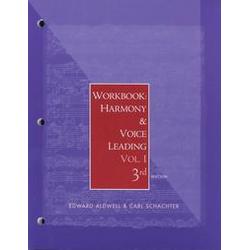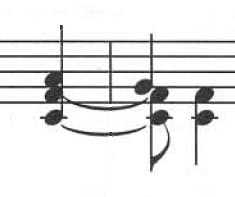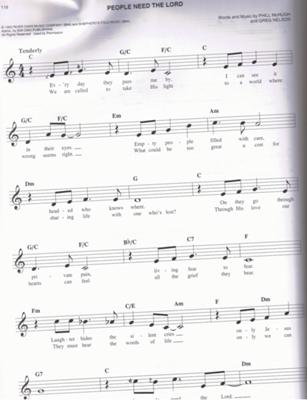Augmented Piano Chords
When I view the augmented chord chart some of these chords don't seem to make sense to me. Why does an A augmented chord contain an E# instead of F? Why does a B augmented chord contain a F## instead of G? Why does a C# augmented chord contain an E# instead of F? Why does an E augmented chord contain a B# instead of C? Finally, how can a key contain 2 sharps? Thank you, BBrockman@optonline.net Click here to read or post comments Return to Piano FAQs Question or Answer. Playing Patterns over Chords in The Right Hand
by Fann
Can you kindly show me how to perform patterns over chords in slow songs? I'd like to learn to 'fill in' the chords in a nice way. Click here to read or post comments Return to Piano FAQs Question or Answer. Are We Supposed to Play All Notes of a Chord At The Same Time?
by AYA ALANSARY
Do we have to press the notes of the chord together or press them one after the other? Click here to read or post comments Return to Piano FAQs Question or Answer. Playing The Bass in the Left Hand
by Jerry
Hi David, I am already enjoying your lessons. Its taking time but i am gradually getting there. Click here to read or post comments Return to Piano FAQs Question or Answer. What is the V in a Minor Scale?
by Jack
Hi David Click here to read or post comments Return to Piano FAQs Question or Answer. Combining the Melody and the Chords in the Right Hand
by Jay Jung
I just restarted playing piano after a long break. I am more into accompanying than solo. Click here to read or post comments Return to Piano FAQs Question or Answer. Feeling the Music Beats When Playing Piano by Chords
by Jerry
How do I spot the music beats in a piece? Click here to read or post comments Return to Piano FAQs Question or Answer. How to Add a Groove
by Aly
How do you add in a groove to a song without making it sound like a mess? Click here to read or post comments Return to Piano FAQs Question or Answer. What's between Chords and Left Hand Accompaniment in Classical Music?
by Ido Ronen from www.piano-play-it.com
Hi, I can understand from your question that you can read right hand and some chord symbols, but when it comes to the left hand?oops! Lots of students experience difficulties in read noted on the bass staff.  Play There is a very clear harmonic structure which can be written by chord symbols in the following manner:  Play Playing the second example however, will be an insult to Beethoven and he will probably turn over in his grave since there is much more content in the accompaniment than a simple chord. In blues, pop, rock etc. the chord symbols are written above the melody and if you know how to read the upper clef and the chord signs you should be able to play immediately. It's a different story in Classical music. The composer writes the part of the left hand with specific notes. The left hand often accompanies the main melody but not always. The composer chooses to write the specific part of the left hand because he adds a unique interaction between the voices of the chord and his style of arrangement. That?s the beauty and the art! Here is another example in which you can see some chord inversions, and their texture, as chosen by the composer. Mozart sonata in C (k.545):  Play If you get the same melody as written above with only chord symbols, you would probably play it as written below, (maybe in a different chord position):  Play Mozart would be very sad if you play his work using the 2nd example because it will lack interaction of his accompaniment and characteristics of his time. My point is that behind many compositions in classical music there is a clear structure of melody and chords (harmony structure), but the beauty of that music is the way the composer chooses to present the harmony. In many cases I rewrite complicated compositions for my students by using only the main melody and chords. It helps them to understand the harmonic structure behind the piece, but that is only an introduction to reading the left hand part, and playing the whole composition. It?s not possible to rewrite all compositions this way- for example ,Bach's writing is polyphonic (it means that there is more than one melody which runs at the same time), so the left hand is playing the melody as well, and could not be represented by a single chord at that time: Invention no.8:  Play In this case you cannot escape from learning immediately the part of the left hand. To summarize, if you want to enjoy and play classical music you should know how to read the notes on the bass clef. I suggest you take it step by step by following "reading piano notes on the bass clef lesson"; this is where we teach about reading notes in the lower register. And if you'd like to learn more about harmony - I suggest that you to consider purchasing the book Harmony and voice leading - that?s the bible of understanding the world of harmony. Why should you buy the "Harmony and Voice Leading" books on Ebay?- On eBay you'll find every book from the collection that has ever existed - You know exactly what you're getting (and you it will work :-)
Provides material for homework assignments, classroom demonstrations, and periodic reviews. A generous assortment of excerpts from the literature for assignments in analysis. Volume I corresponds with the first half of the text. Click here to read or post comments Return to Piano FAQs Question or Answer. Is Classical Music Based On Chords (In Left Hand)?
by David
Comparing blues for example and classical music, is there any logical behind left hand notes? Return to Piano FAQs Question or Answer. Piano Groove
by chad
I was working on the amazing grace tutorial and was having trouble with the groove. Am I playing both the g chord in the right hand and in the left for bass. then right hand, then left hand then switching chord to the next? Can you help explain the groove. Thanks for your good lessons just struggling with the groove with this song and knocking on heavens door.. confused with the both, right left right and both Click here to read or post comments Return to Piano FAQs Question or Answer. About Fingerings of Chord Inversionsby TRYDER
It's been said that it is best to start with this 1,3,5 formula except on the 2nd inversion, but I personally feel more comfortable doing it my way - which is 1,2,4, - 1,2,5, - 1,2,4(right hand); left hand I'm not really sure about(5,4,2- 5,4,2-5,4,1)... Click here to read or post comments Return to Piano FAQs Question or Answer. Daisy
by Daisy
Message: Can you please tell me, if I play the chord of Bm = BDF# and then add a Bb note above this, what chord does that then give me? Click here to read or post comments Return to Piano FAQs Question or Answer. open voicing
by Cheri
Do you have any tips for making it easier to visualize the open chord ,is there a formula or something like that ? Click here to read or post comments Return to Piano FAQs Question or Answer. Voice Leading within a Chordby Emma
Tied Notes
Hi David, Click here to read or post comments Return to Piano FAQs Question or Answer. Key signature and chords
Why, when a piece of music is written in say C major, or E flat, or any other key signature, that same piece of music includes many different chords from other keys, and just a few (if any) from the key it is written in? Click here to read or post comments Return to Piano FAQs Question or Answer. Will you upload videos for chord theory lessons?
by Ryan
Hi, David. I found this site two weeks ago and feel so lucky to have you as my online teacher. Your explanation is very clear and I've learnd to play piano quickly. Click here to read or post comments Return to Piano FAQs Question or Answer. Chords to this intro?
by Chris
http://www.youtube.com/watch?v=8EooiBaW1BA Click here to read or post comments Return to Piano FAQs Question or Answer. How to Play a G/C or F/C Chord?by Rev. White
Lead sheet
How do you play a G/C, or an F/C chord (L/hand), while the right is playing notes above middle C. If this is on a video please let me know which one; or if I may, would you make one. (I am trying to learn "People Need the Lord," in the key of C, from a lead sheet). Click here to read or post comments Return to Piano FAQs Question or Answer. |
How To Play Piano by ChordsTHE FAST AND EASY WAY TO LEARN PIANO! The Ultimate Piano by Chords Learning Kit "Your entire site is simply fantastic. I really loved it. Now I am learning the basics of piano by myself, with your really great help. Thank you very much!" Jaime C. from Brazil "I only started to play about six weeks ago but the last hour of watching your videos about chord progressions has been something of a revelation. You're brilliant!!!!" Stephen Roberts from U.S.A "I'm a beginning keyboard player and your video's are an excellent guide. You're absolute not in a hurry, and take time to explain. I'm sure I'll follow all your lessons to get the hang of playing the piano/keyboard!" Wouter E. from the Netherlands "Thanks for all your work ( tuto and others ). You're doing a really great job, You're the best internet teacher I know." Anthony Hassen Cohen from France |
|||
|
Enjoy This Site?
Then why not use the button below, to add us to your favorite bookmarking service? |
||||
|
| Homepage |
Site Map |
Just Added |
Buy Us Coffee! |
Sign up / Freebies |
Recommended Products |
Articles & Reviews |
Blog |
Beginners Course |
Accompaniment Course |
Notes Lessons |
Playing Technique | Chords | Theory| Tutorials | Sheets | Forum | Piano Videos | History | Piano Stuff| Keyboards and Pianos| |
||||
|
Copyright piano-play-it.com © 2008-2017. | ||||

















